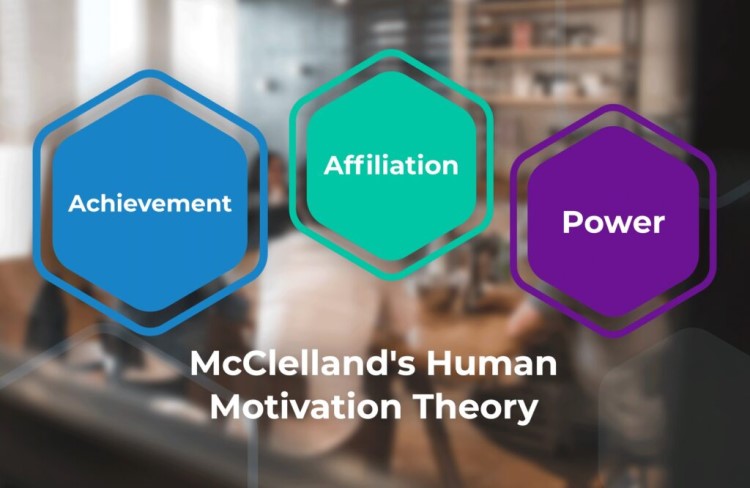
Introduction to McClelland’s Human Motivation Theory: Understanding Key Motivators
McClelland’s Human Motivation Theory, developed by psychologist David McClelland, identifies three primary motivators that drive people: achievement, affiliation, and power. These motivators influence individual behavior and team dynamics in significant ways. Understanding these motivations can help you manage teams more effectively by aligning tasks and roles with what inspires each person.
People driven by achievement seek personal growth and measurable success. They set challenging goals, value feedback, and constantly look for ways to improve. In a team setting, achievement-oriented individuals often push themselves and others toward higher standards, which can boost performance.
Those motivated by affiliation value social connections and prefer cooperative environments. They are often most comfortable working in teams and seek harmony in group settings. By fostering positive relationships, affiliation-motivated individuals can help create a supportive workplace culture.
The third motivator, power, influences individuals who seek to have an impact and influence over others. They enjoy leading and organizing, and often thrive in leadership roles. When managed thoughtfully, power-motivated employees can inspire others and drive group progress. By recognizing and tapping into these three motivators, McClelland’s Human Motivation Theory allows you to better support your team’s needs and build a balanced, motivated workforce.
The Need for Achievement: Motivating High-Performers
Within McClelland’s Human Motivation Theory, individuals driven by the need for achievement are often high-performers who set challenging goals for themselves. These employees tend to value personal success, seek measurable outcomes, and enjoy tackling tasks where they can demonstrate their capabilities. They often prefer to work independently, allowing them to maintain control and directly track their progress. Achievement-motivated individuals thrive when their goals align with opportunities for personal growth.
To support these high-achievers, you can set clear and challenging goals. These should be specific enough to provide direction, yet challenging enough to maintain their interest. By offering measurable milestones, you allow achievement-driven employees to see their progress, which keeps them engaged. Regular feedback is also essential, as these individuals actively seek insights that can help them improve. You can keep them motivated by offering timely, constructive feedback, focusing on how they can build upon their strengths.
Creating growth opportunities is another effective strategy for achievement-motivated employees. Projects that offer responsibility or the chance to develop new skills can help them reach their full potential. Additionally, you may encourage them to pursue independent learning or advanced projects that align with their career goals. By understanding and applying McClelland’s Human Motivation Theory, you can create a work environment where achievement-motivated individuals feel challenged, supported, and engaged. This approach not only boosts their performance but also strengthens your team’s overall success.
The Need for Affiliation: Building Collaborative Work Environments
In McClelland’s Human Motivation Theory, individuals with a strong need for affiliation are driven by relationships and social connections. They value a sense of belonging and enjoy working in environments that prioritize cooperation and mutual support. These individuals thrive when they feel accepted and connected, often bringing a positive, team-centered approach to their work.
To support affiliation-motivated employees, focus on building a collaborative work environment. Create team projects where they can contribute alongside others, fostering a sense of shared purpose. By encouraging open communication and group discussions, you can help these employees feel more connected to their colleagues. Regular team meetings and opportunities for collaboration can provide the social interaction they find motivating.
Additionally, emphasize recognition and appreciation for their contributions to the team. Affiliation-driven individuals value positive feedback, especially when it acknowledges their role in helping others or strengthening team cohesion. Organizing social events or team-building activities can also strengthen bonds among team members, creating an inclusive workplace culture. By understanding and applying McClelland’s Human Motivation Theory, you can create a sense of community that enhances motivation and productivity for affiliation-driven employees. This supportive environment not only boosts morale but also fosters a positive, collaborative work culture.
The Need for Power: Empowering and Guiding Leadership-Oriented Individuals
According to McClelland’s Human Motivation Theory, individuals driven by a need for power seek influence and control within their roles. These leadership-oriented employees often have a strong desire to make an impact and guide others. However, to channel this power motive effectively, it’s essential to balance their ambition with a sense of responsibility and purpose.
You can start by placing power-motivated individuals in roles where they can lead projects or teams. These opportunities allow them to use their strengths while contributing to the organization’s goals. Providing clear responsibilities and accountability helps them develop constructive leadership skills. By guiding them toward roles that require collaboration, you encourage them to focus on building others up rather than only seeking personal gain.
Regular feedback is also important for these individuals. They benefit from knowing how their influence affects the team and overall results. Acknowledging their positive impact can reinforce their commitment to responsible leadership. Encouraging them to mentor others or take on coaching roles can also be a productive outlet for their ambition. This approach not only satisfies their power needs but also enhances team morale and performance.
By understanding the power motive within McClelland’s Human Motivation Theory, you can create an environment that nurtures healthy leadership. Providing the right roles and responsibilities allows these individuals to channel their drive in ways that benefit the entire team. This balanced approach helps to shape ambitious employees into leaders who lead with purpose and integrity.
Using McClelland’s Theory to Build Balanced Teams
Using McClelland’s Human Motivation Theory, managers can build well-rounded teams by understanding and balancing the different motivators of achievement, affiliation, and power. Each motivator brings unique strengths to a team, allowing individuals to contribute in ways that align with their personal drivers. Recognizing these differences can help you assign roles that play to each person’s strengths, which boosts both performance and engagement.
Achievement-motivated individuals thrive when working on challenging projects with clear goals. They drive progress and set high standards, pushing the team to excel. However, without balance, a team full of achievement-focused members may struggle with collaboration. This is where affiliation-driven employees add value. Affiliation-motivated team members prioritize harmony and foster positive relationships, which helps create a supportive and cohesive work environment.
Power-motivated individuals contribute leadership and direction. They can be effective in coordinating efforts and making decisions that keep the team on track. However, an overemphasis on power could lead to conflict if it isn’t balanced with collaboration. By blending these motivations thoughtfully, McClelland’s Human Motivation Theory helps you build teams where each member’s strengths complement the others. This balanced approach not only addresses potential challenges but also creates a dynamic team capable of achieving shared goals.
Applying McClelland’s Theory in Real-World Business Scenarios
McClelland’s Human Motivation Theory has guided many companies in creating effective strategies to motivate employees and improve team performance. For example, Microsoft has applied this theory to address the diverse motivations within its workforce. Achievement-oriented employees are given challenging projects with clear goals and metrics, keeping them engaged by providing regular feedback as well as opportunities for growth. This strategy has helped Microsoft maintain a high level of innovation and continuous improvement across its teams.
Another example is Starbucks, where the need for affiliation plays a significant role in employee engagement. Starbucks fosters a strong sense of community, offering a collaborative environment and regular team activities. This focus on connection meets the needs of affiliation-driven employees, which has contributed to high employee satisfaction and a positive workplace culture. By creating a sense of belonging, Starbucks motivates its employees to deliver better service and build long-term customer relationships.
In organizations like General Electric, the power motivator is channeled through leadership development programs. Employees with a strong drive for power are given opportunities to lead projects and manage teams. This approach has enabled General Electric to build a strong internal leadership pipeline. By applying McClelland’s Human Motivation Theory, these companies have created supportive environments that match individual motivations with roles and opportunities. This alignment has led to improved team cohesion, better performance, and also stronger employee retention.
Conclusion
McClelland’s Human Motivation Theory offers valuable insights into what drives people at work. By understanding the needs for achievement, affiliation, and also power, you can create a more engaged and motivated team. This approach allows you to tailor roles and responsibilities to match individual motivations, resulting in higher productivity as well as job satisfaction. When you align these motivators with team goals, you build a stronger, more balanced work environment. Applying McClelland’s theory helps your organization foster growth, collaboration, and leadership. Ultimately, this creates a workplace where everyone can contribute their best.


